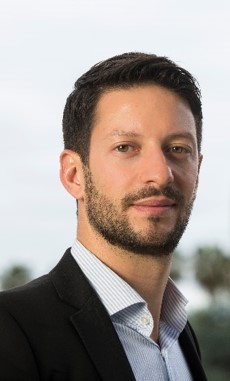Sociedad Mexicana de Ciencia y Tecnología
de Superficies y Materiales A.C.

Sociedad Mexicana de Ciencia y Tecnología de Superficies y Materiales A.C.
XV International Conference on
Surfaces, Materials and Vacuum
September 26th - 30th, 2022 / Puerto Vallarta, Jalisco

Matteo Cargnello, PhDDepartment of Chemical Engineering, Materials Science and Engineering (courtesy) andSUNCAT Center for Interface Science and Catalysis Matteo Cargnello received his Ph.D. in Nanotechnology in 2012 at the University of Trieste, Italy, under the supervision of Prof. Paolo Fornasiero, and he was then a post-doctoral scholar in the Chemistry Department at the University of Pennsylvania with Prof. Christopher B. Murray before joining the Faculty at Stanford University in January 2015. He is currently Assistant Professor of Chemical Engineering and, by courtesy, of Materials Science and Engineering and Terman Faculty Fellow. Dr. Cargnello is the recipient of several awards including the Sloan Fellowship in 2018, the Mitsui Chemicals Catalysis Science Award for Creative Work in 2020, and the Early Career Award in Catalysis from the ACS Catalysis Division in 2022. General goals of the research in the Cargnello group pertain to solving energy and environmental challenges. Uniform and tailored nanocrystals and nanostructures are synthesized, studied and used for energy and environmental applications through catalytic processes, with emphasis on how to precisely control their structure to understand and exploit interactions between well-defined building blocks |
||
Understanding and Engineering Catalytic Materials Using Nanocrystal PrecursorsCatalytic processes are central to the goal of a sustainable future. A promising approach in developing catalytic materials is represented by the design of catalytic sites based on the knowledge of structure-property relationships, and in the precise synthesis of thes sites at the atomic level. Colloidal nanocrystals, with tunable active sites and compositions, can help in this mission. The goal of this talk is to show how this approach can provide not only fundamental understanding of catalytic reactions, but also a way to precisely engineer reaction sites to produce efficient catalysts that are active, stable and selective for several important transformations. Advances in the synthesis of these materials will be presented. Examples of the use of these building blocks as supported systems or in combination with hybrid organic materials will be shown, both to understand trends in methane and CO 2 activation, and in the preparation of optimized catalytic systems combining multiple active phases. In all these examples, important efforts to obtain precious structure-property relationships will be highlighted, with this knowledge used to prepare more efficient and stable catalysts for reducing the emission
|